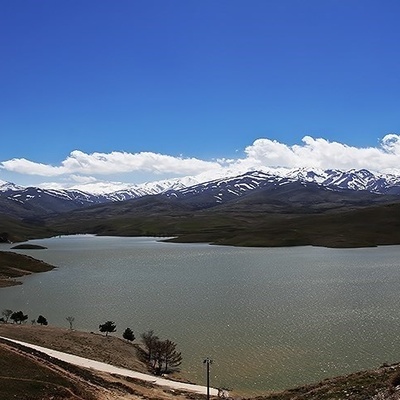Ajideh Dazzi is an ancient handicraft and one of the important traditional arts of Kerman. Stay with Saadnews for an introduction to this art.


Ajideh Dozzi refers to delicate and intricate stitching on a two-layered fabric with a thin layer of cotton. It is a type of famous Iranian needlework that has its own distinct style and is particularly popular in Kerman. Ajideh Dozzi has deep roots in traditional Iranian arts. The oldest reference to this art dates back to the Achaemenid era, where the underside of the straps of quivers was embroidered with a layer of cotton fabric, providing padding to prevent the weight from hurting the shoulder of the person carrying it.
This type of stitching is commonly used for decorating pillowcases, quilts, bedcovers, clothing, dervish hats, "Baqcheh Soozani" (a type of mat that was carried when going to the bathhouse and placed under clothes to prevent water from dripping), prayer rugs, bedspreads, and more. Various motifs are also created using this stitching technique on fabrics.
This art is attributed to the Achaemenid and Parthian periods. In the Achaemenid era, a cotton fabric was placed under the straps of quivers to prevent discomfort from the weight. From that period, multiple examples of this type of work appear in the carvings of the Parthian and Sassanid eras. It continued to be relatively popular in the Islamic period, especially during the Safavid era. During this time, and also during the Afsharid, Zand, and Qajar periods, artists used Ajideh Dozzi to create intricate designs on calico fabrics.
In his travelogue, Pietro della Valle describes Iranian clothing in the Safavid period: “The vests that Iranians wore in winter were often made of cotton thread, colorful with patterns, and lined with cotton.” Furthermore, Chardin wrote that during the Safavid period, Iranian clothing was made of silk or linen, with a thick lining, and a cotton layer placed between the outer fabric and lining to add warmth.

Methods of Ajideh Dozzi
Simple Method Without a Middle Layer: The design, which is first drawn on paper, is perforated with a sewing machine without threading the needle. The fabric is laid flat on a smooth surface, and the lining fabric is stitched to the top fabric. The paper is placed on the lining, and the design is transferred using charcoal or chalk powder. Then, short stitches are used to sew the design onto the lining and top fabric using uncolored cotton threads. In some cases, colorful silk threads are used instead of cotton thread.
Layered Ajideh Dozzi: The top fabric is laid flat, and a cotton layer is placed on top. They are stitched together, and the lining is then added to the cotton layer. All three layers are sewn together. Then, the layers are stitched with gaps, creating the design, and stitching begins. Ajideh Dozzi can be done by hand or within a frame. If using a frame, the top and bottom of the fabric are sewn with frame strips, ensuring that the fabric doesn't loosen during stitching. The stitching uses short stitches and can be done in two ways: one method involves pressing the needle down to pass through all three layers, then bringing the needle back up to create equal-length stitches, with one hand always under the fabric. The other method involves taking a few equal stitches, then pulling the needle out of the fabric. Long needles are typically used for this stitching.
Raised Ajideh Dozzi: This method uses two layers of fabric but no inner layer. The design lines are stitched, and the inner areas are filled with cotton to create a raised effect. Another method involves stitching two lines along the design and threading thick wool or embroidery threads through the channels to raise the lines. The lining fabric is stitched to the top fabric, the design is drawn on the lining, and the lines are sewn through both fabrics. Once the design is fully stitched, the areas are filled with cotton. A small opening is made in the lining to carefully insert the cotton using a needle, ensuring the filling is uniform and neat.

Ajideh Dozzi is used for decorating pillowcases, clothing, nightcaps, "Baqcheh," kitchenware, and more. It is also used to decorate dervish hats, adding both beauty and durability. Common motifs include geometric shapes, flowers and birds, floral vines, zigzag patterns, and more.
One popular pattern involves cutting squares into four pieces with diagonal cuts. Inside these squares, triangles are re-arranged into smaller lozenge shapes.
This art was historically popular in Kerman and Khorasan provinces. Today, it is mostly practiced in Kerman, especially in the city of Mahaan, and in other areas of Iran. In this article, we aimed to introduce the art of Ajideh Dozzi, and we hope you enjoyed reading about it.

